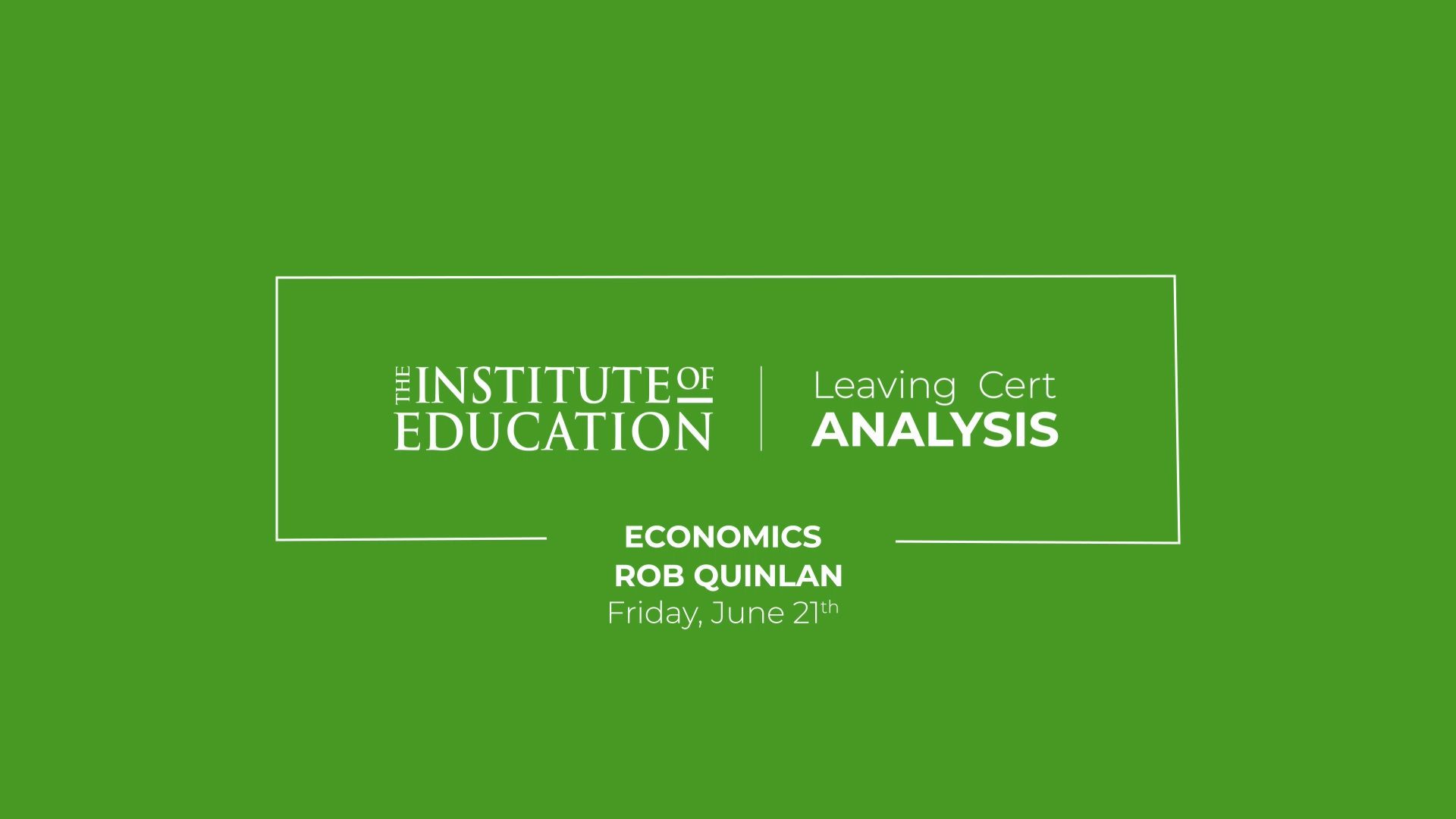Reaction to 2024 Leaving Certificate Economics (Higher Level) by Rob Quinlan, Economics teacher at The Institute of Education.
- A paper that was more reflective of past papers than current economic topics.
- Overarching topics appeared with a contemporary rebrand.
Economics is a relentless exam where students need to answer a huge number of short questions such that steam will be jumping off their pens. Students will be delighted with this paper, particularly if they have practiced their past papers. Many moments on this exam were reproductions of previous questions, sometimes with only a minor name change for variety. For most students this will have meant that they were retracing familiar ground, the bread and butter of the course. For those who really love the dynamism of Economics and how it connects with the contemporary world, they may have had a few moments that really engaged them and gave them a distinct sense of triumph.
Section A launched the paper with two questions on Macro-Economics, much the to approval of students. This paper tended to be Macro heavy, which many prefer due to the room to maneuver in answering, as opposed to the much stricter Micro material. Both questions on the Balance of Payments and CSO data were very familiar, the latter being a near copy-and-paste of last year’s exam. Question 3 was a Micro-Economics graph question that will have suited most people as it drew on concepts established early on in Senior cycle when the students are fresh to the subject. The reference to Budget 2024 was a nominal update, but the material of the question on energy credits is similar to last year’s paper. Question 4 would have been the first moment where students needed to sit back and take note. The concepts of “Capital Widening” and “Capital Deepening” haven’t been examined for 15 years and so may have dropped out of view in some classrooms.
Question 5 was a fixed supply curve on tickets for Harry Styles. This concert question seems to be a new fixture of the paper with only the name of the artist updated as a nod to the new batch of students. This was a trend throughout the whole paper as vaping took the place of smoking and drinking in Question 7’s examination of the concept of “market failure”. Question 8 (b) would have challenged many as it asked on “characteristics of consumers” rather than the more typical “characteristics of the market”, thus offering much less leeway in crafting an answer. Question 10 will be a popular favourite as it is now the 3rd year in a row it has appeared. Students will have avoided it like the plague when it first appeared on the new course but will now find it familiar territory.
Those anticipating a sting in Section B after a very workable A will have been relieved by several staples of the course. Question 11 asked about tourist numbers and included a very recognizable multiplier calculation. Question 13 spanned everything from the hidden economy to Consumer Price Index, the effects of Inflation and regulation. The last part bore the topical rebrand to online gambling to update it for 2024’s students. Question 14 will be welcomed by many but might have caught some people out. This was the last unexamined piece of the new course and so it was highly anticipated to make an appearance. However students had to keep sharp and not fall into trap of equity “monopolistic competition” with monopoly. Later in 14 (c) (ii) the difference between “real rate” and “nominal rate” will have tripped some.
In the end, this paper was very in line with the papers from 2-3 years ago, which will please many. However, this missed some of the contemporary spirit of the subject that would appeal to the top scorers.

